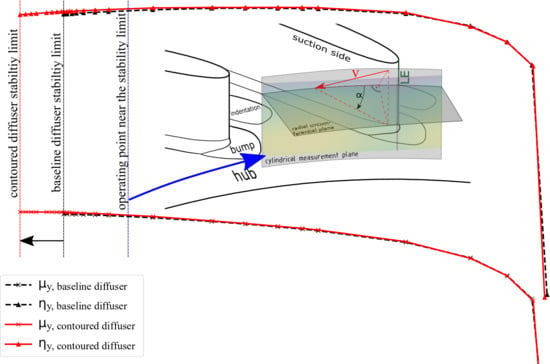Operating Range Extension of an Open Impeller Centrifugal Compressor Stage Utilising 3D Diffuser End Wall Contouring †
Abstract
:1. Introduction
2. Numerical Model
3. Diffuser Modification with Hub Side Wall Contouring
4. Experimental Setup
5. Comparison of Numerical Prediction and Experiment
6. Results
6.1. Detailed Evaluation of Flow Field in Vaneless Space
6.2. Effect of Hub Wall Contouring on Flow Field in Vaned Diffuser
7. Conclusions
Author Contributions
Funding
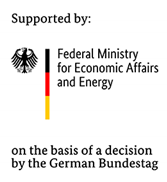
Acknowledgments
Conflicts of Interest
Abbreviations
| circumferential flow angle | |
| cross flow angle | |
| impeller outer diameter | |
| polytropic total-to-total efficiency | |
| flow coefficient | |
| improvement in incidence | |
| mass flow at stage inlet | |
| LE | diffuser leading edge |
| local Mach number | |
| stage Mach number | |
| polytropic pressure coefficient | |
| work coefficient | |
| Power of stage | |
| ps | diffuser vane’s pressure side |
| REF | range extension factor |
| ss | diffuser vane’s suction side |
| total density at stage inlet | |
| circumferential speed at impeller trailing edge | |
| V | magnitude of absolut flow velocity |
References
- Japikse, D. Centrifugal Compressor Design and Performance; Concepts ETI: Wilder, VT, USA, 1996. [Google Scholar]
- Al-Busaidi, W.; Pilidis, P. Review of Efficiency and Stable Operating Range Enhancements Options of Centrifugal Compressors. J. Appl. Mech. Eng. 2015, 4, 1–12. [Google Scholar]
- Botros, K.; Henderson, J. Developments in Centrifugal Compressor Surge Control—A Technology Assessment; International Gas Turbine and Aeroengine Congress and Exposition: Cincinnati, OH, USA, 1993. [Google Scholar]
- Fujisawa, N.; Inui, T.; Ohta, Y. Evolution Process of Diffuser Stall in a Centrifugal Compressor With Vaned Diffuser. In Proceedings of the ASME Turbo Expo 2018, Oslo, Norway, 11–15 June 2018. [Google Scholar]
- Fujisawa, N.; Ema, D.; Ohta, Y. Unsteady Behavior of Diffuser Stall in a Centrifugal Compressor With Vaned Diffuser. In Proceedings of the ASME Turbo Expo 2017, Charlotte, NC, USA, 26–30 July 2017. [Google Scholar]
- Spakovszky, Z. Backward Traveling Rotating Stall Waves in Centrifugal Compressors. J. Turbomach. 2004, 126, 1–12. [Google Scholar] [CrossRef]
- Spakovszky, Z.; Roduner, C. Spike and Modal Stall Inception in an Advanced Turbocharger Centrifugal Compressor. J. Turbomach. 2009, 131, 031012-1–031012-9. [Google Scholar] [CrossRef]
- Skoch, G. Experimental Investigation of Centrifugal Compressor Stabilization Techniques. In Proceedings of the ASME Turbo Expo 2003: Power for Land, Sea, and Air, Atlanta, GR, USA, 16–19 June 2003. [Google Scholar]
- Galloway, L.; Spence, S.; Kim, S.; Rusch, D.; Vogel, K.; Hunziker, R. An Investigation of the Stability Enhancement of a Centrifugal Compressor Stage Using a Porous Throat Diffuser. In Proceedings of the ASME Turbo Expo 2017, Charlotte, NC, USA, 26–30 June 2017. [Google Scholar]
- Ohta, Y.; Goto, T.; Outa, E. Unsteady Behavior and Control of Diffuser Leading-Edge Vortex in a Centrifugal Compressor. In Proceedings of the ASME Turbo Expo 2010: Power for Land, Sea and Air, Glasgow, UK, 14–18 June 2010. [Google Scholar]
- Skoch, G. Experimental Investigation of Diffuser Hub Injection to Improve Centrifugal Compressor Stability. J. Turbomach. 2005, 127, 107–117. [Google Scholar] [CrossRef]
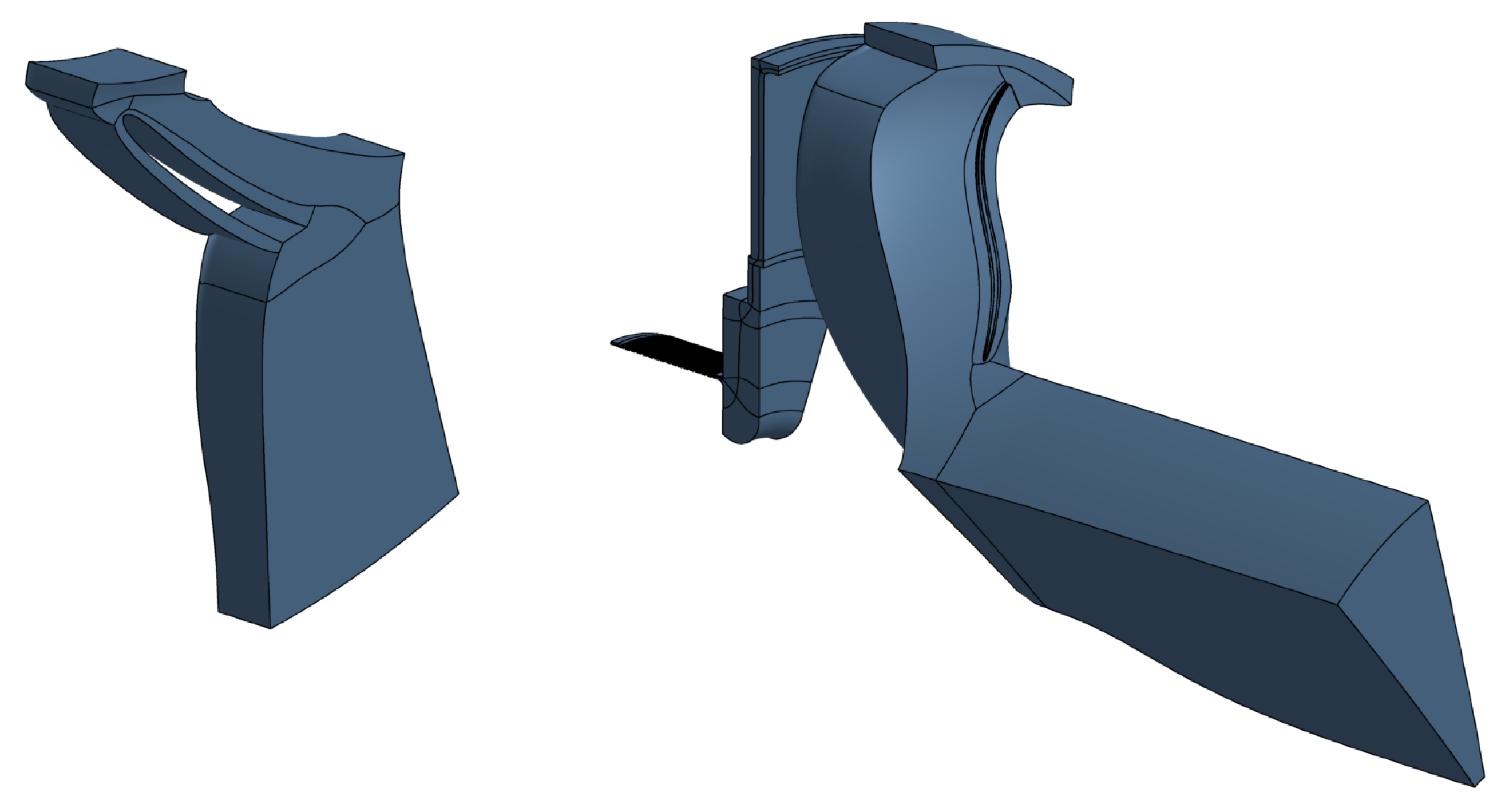
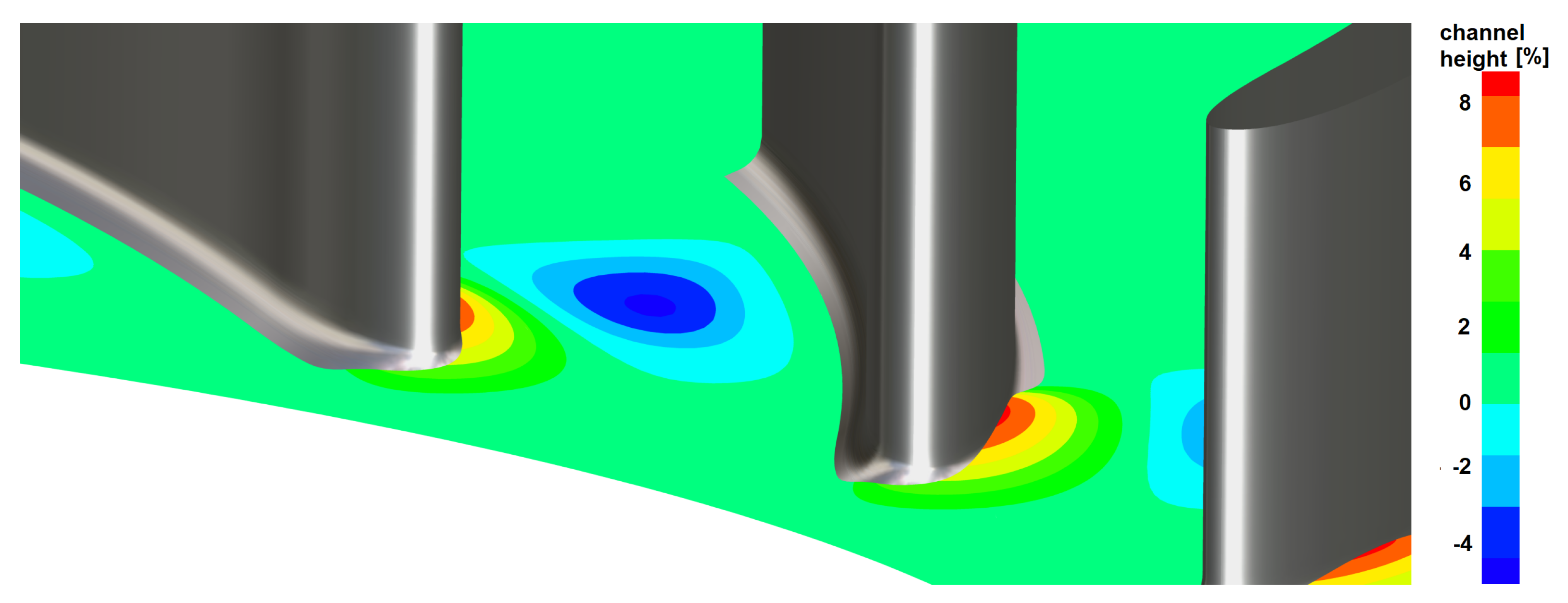
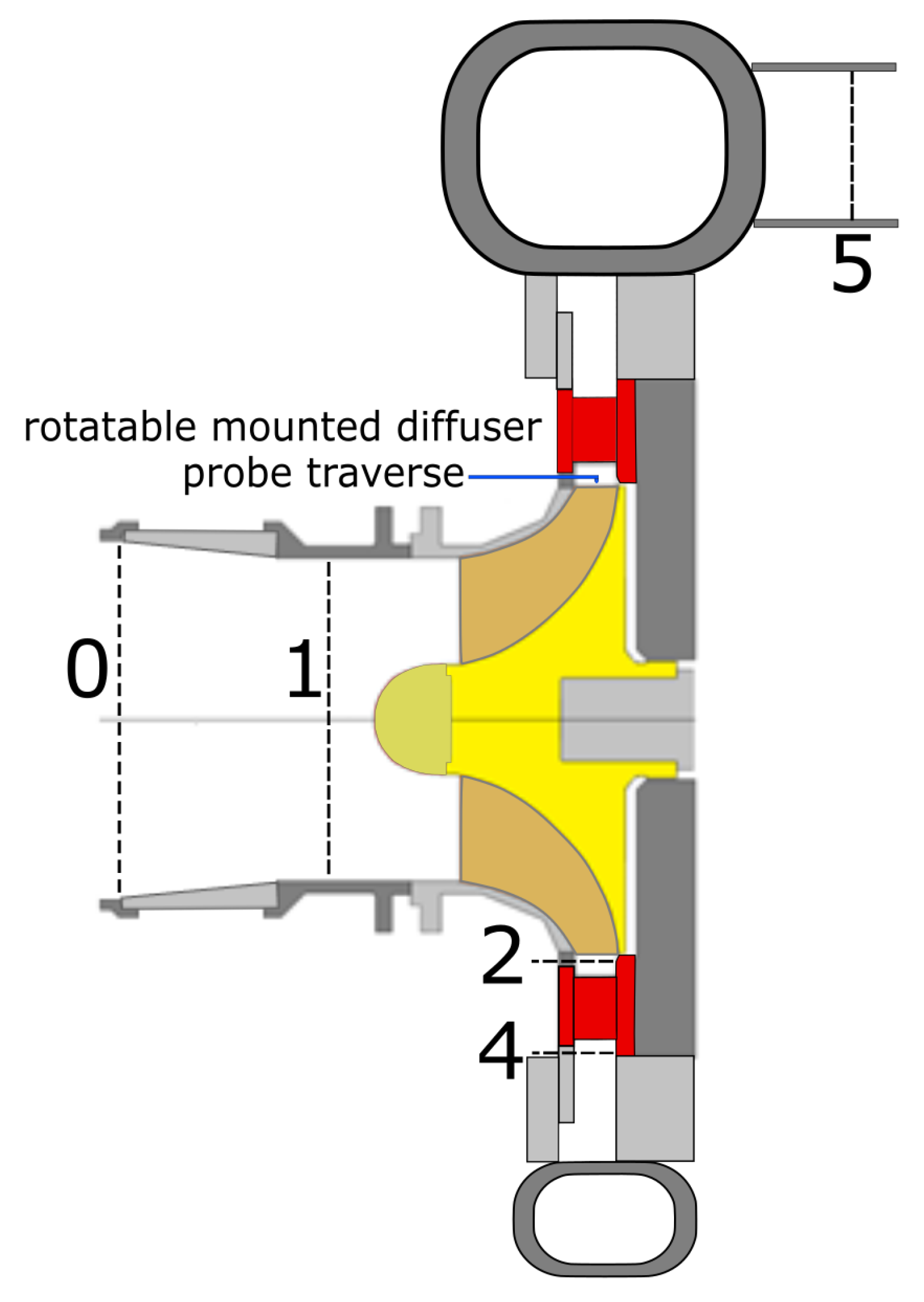
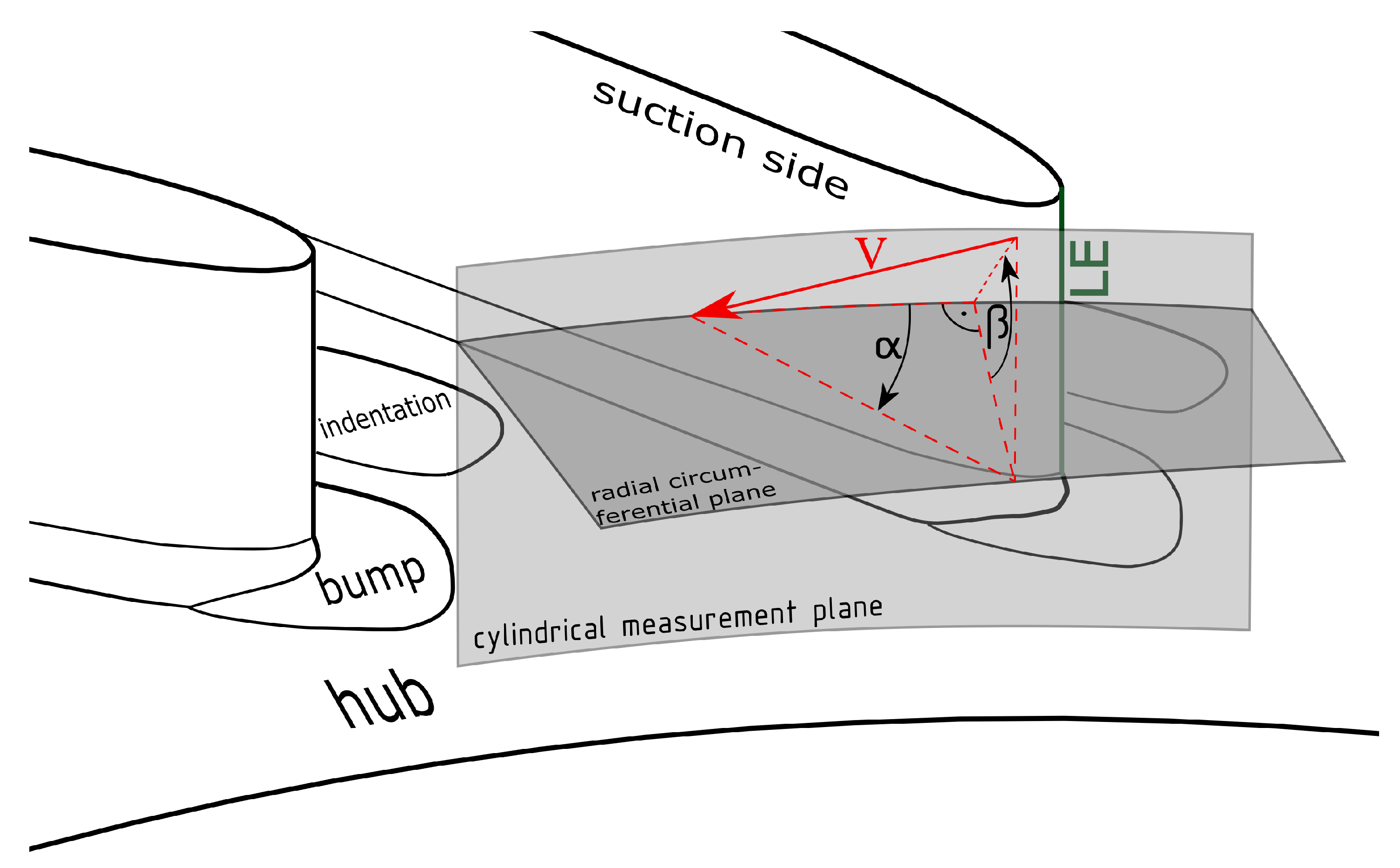
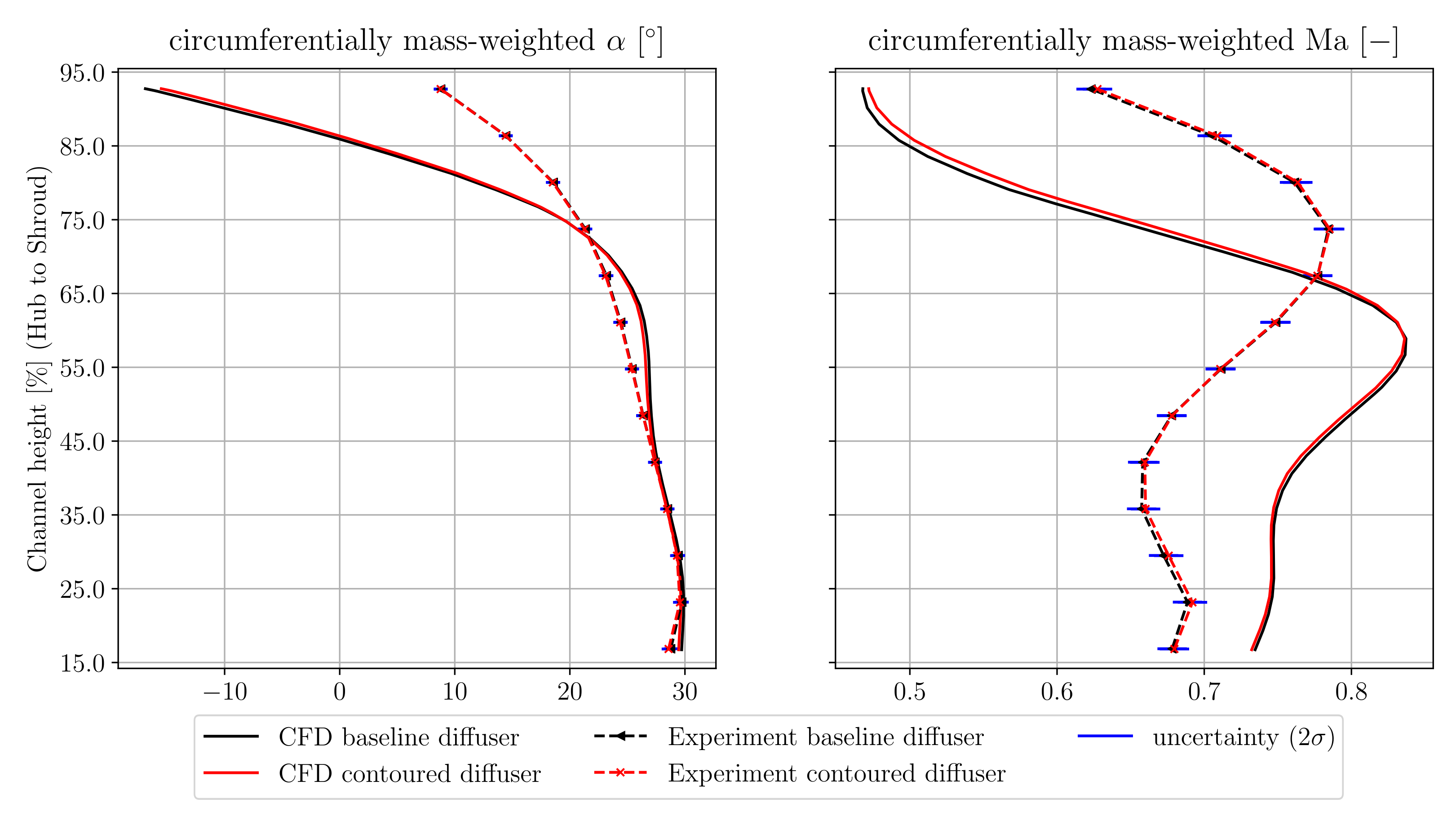
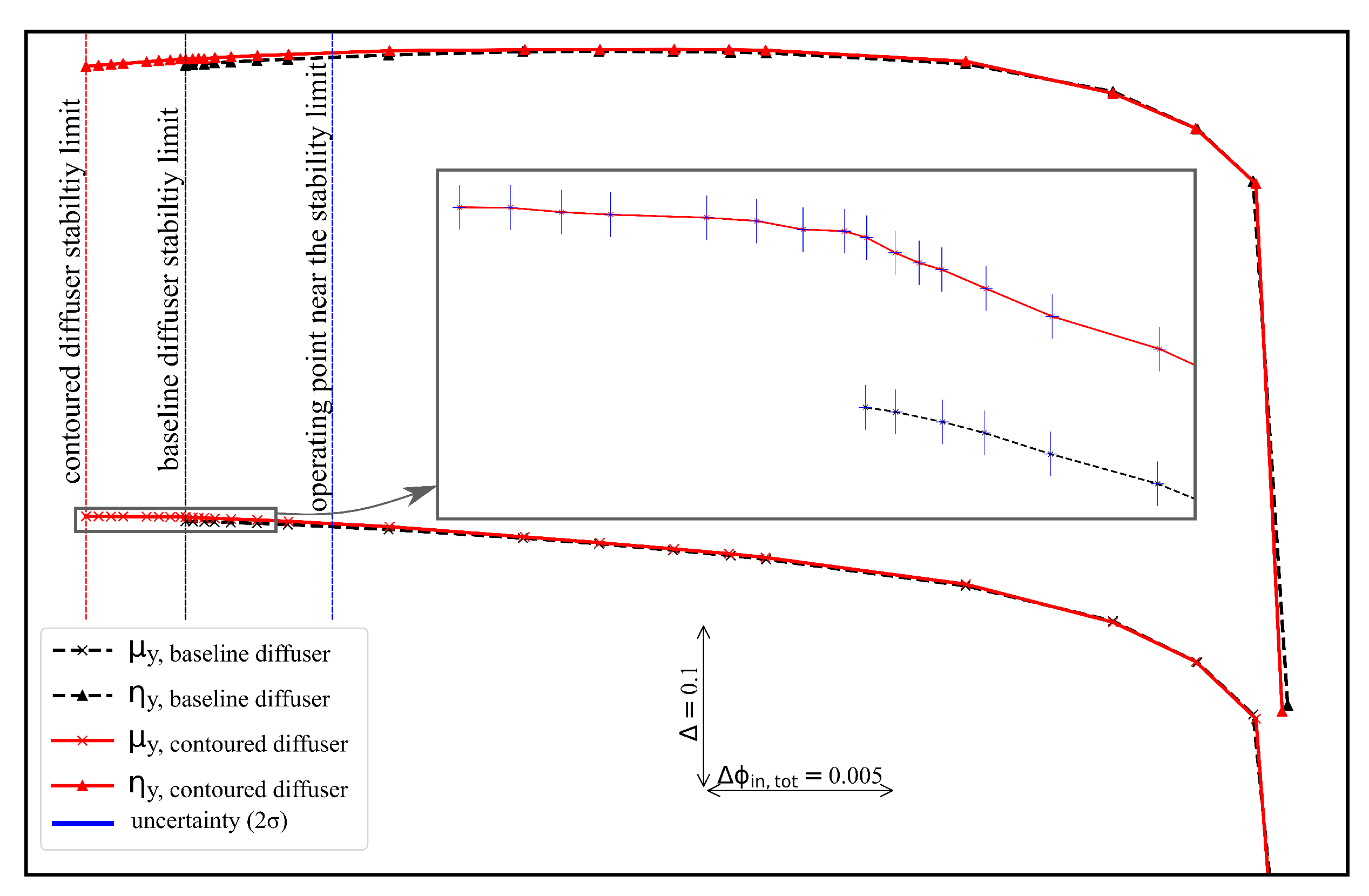
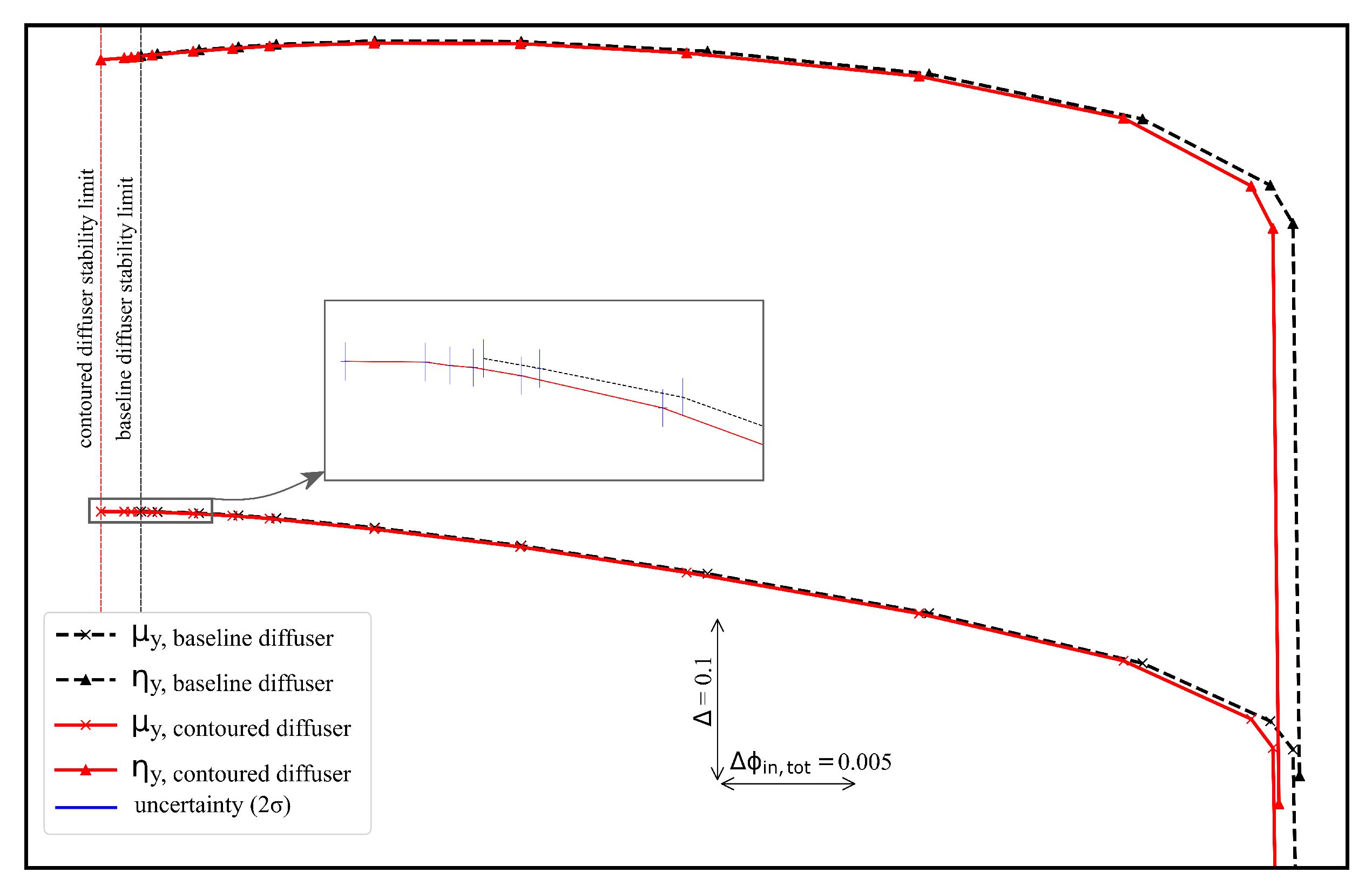
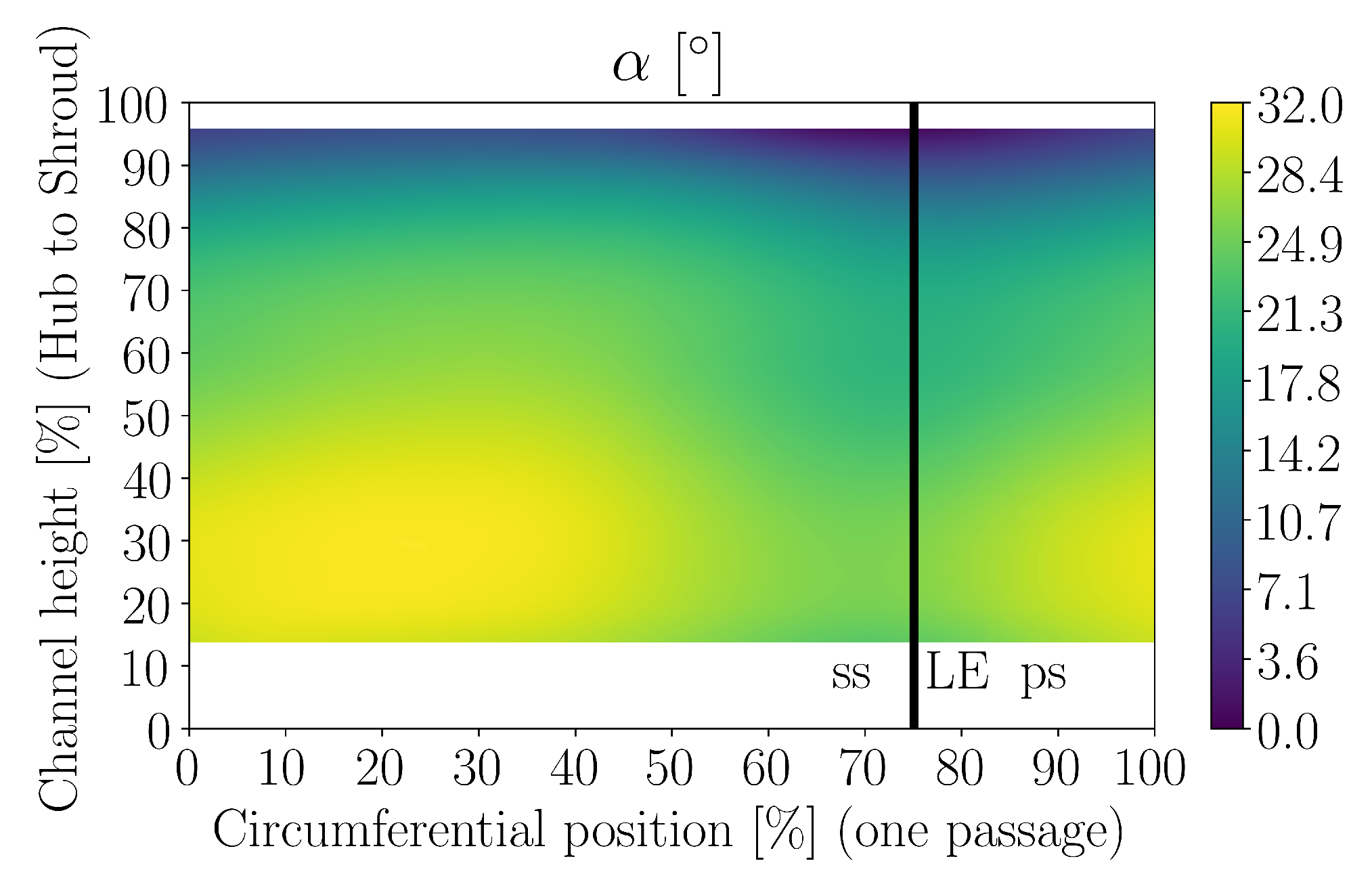
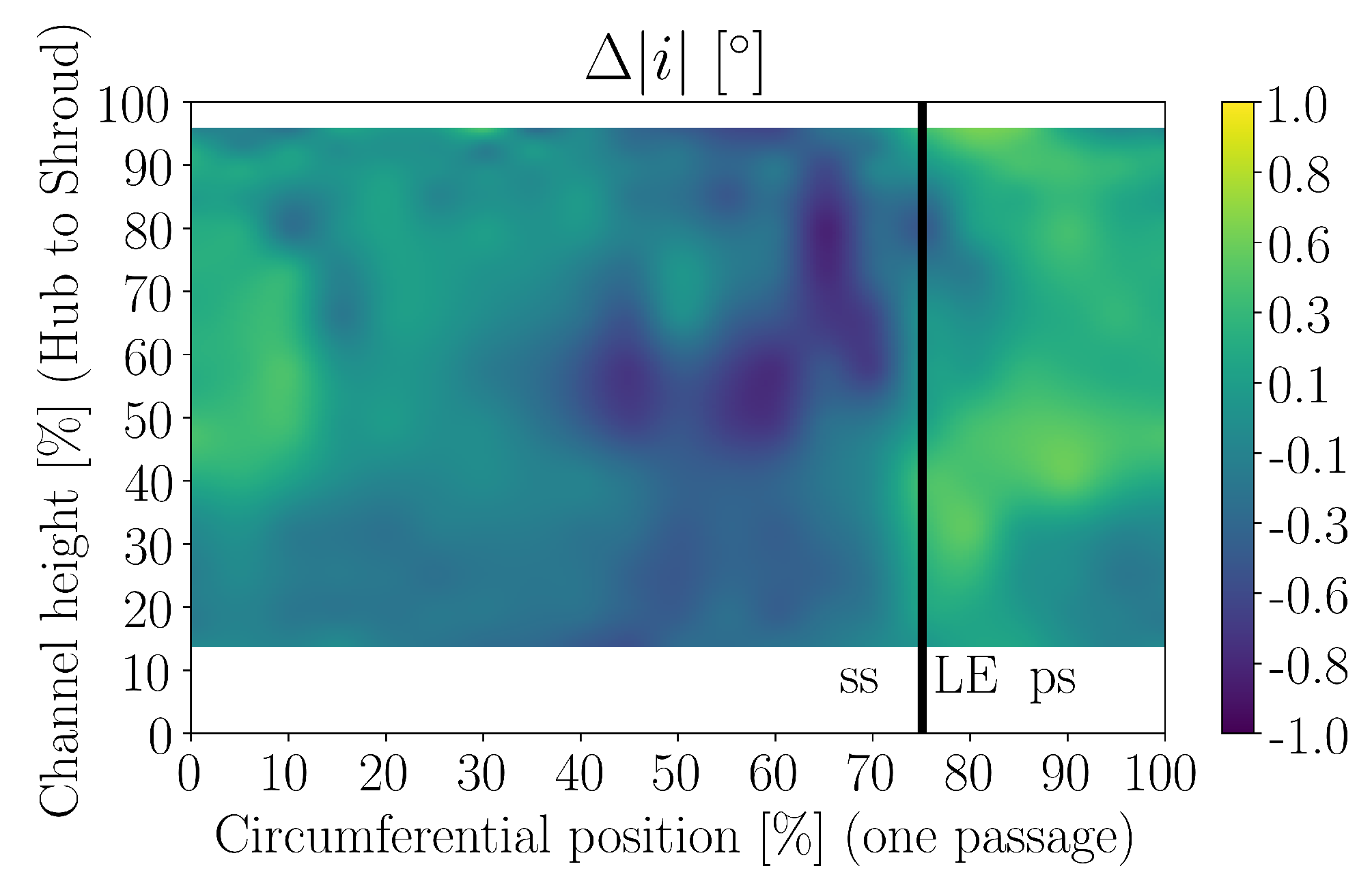
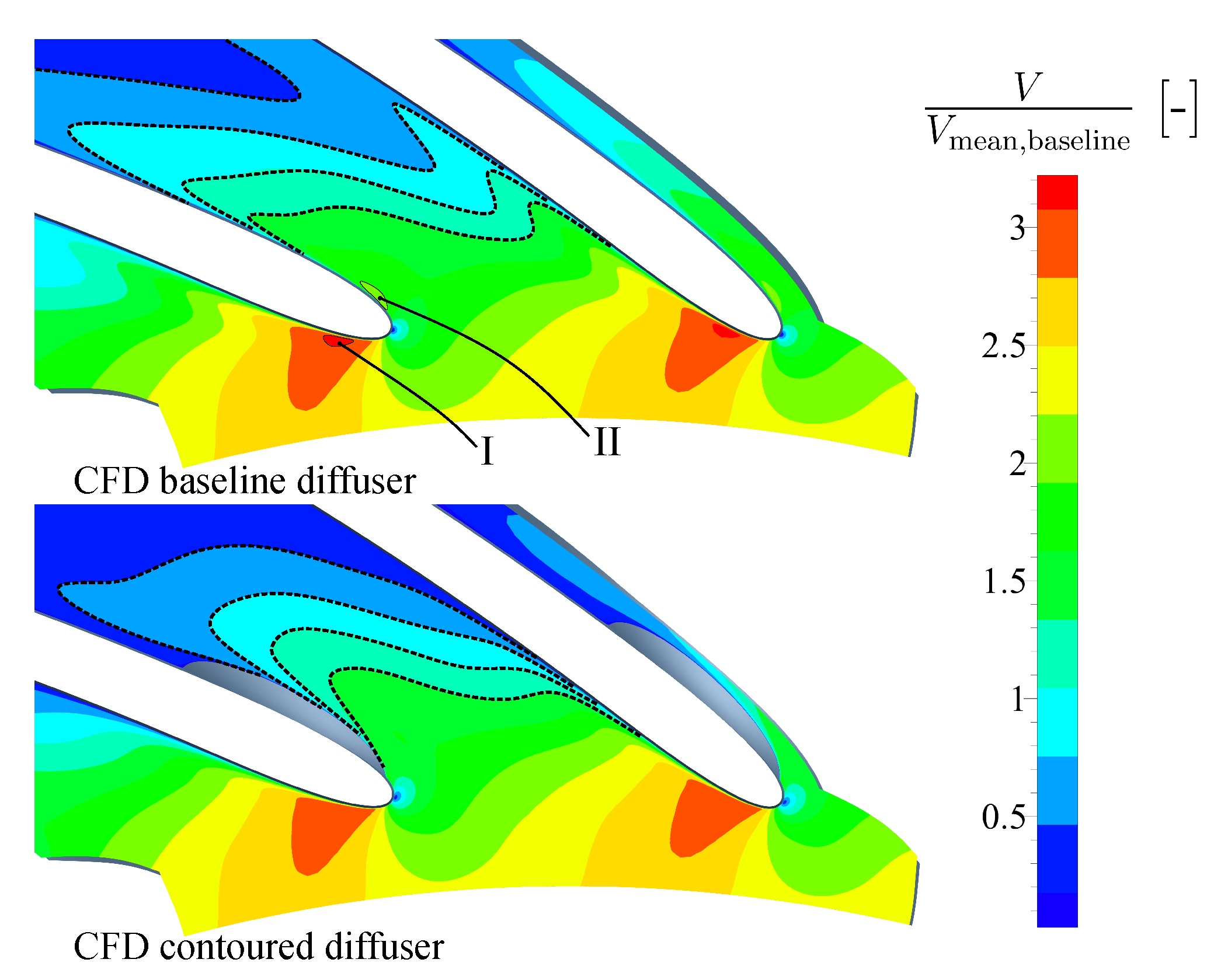
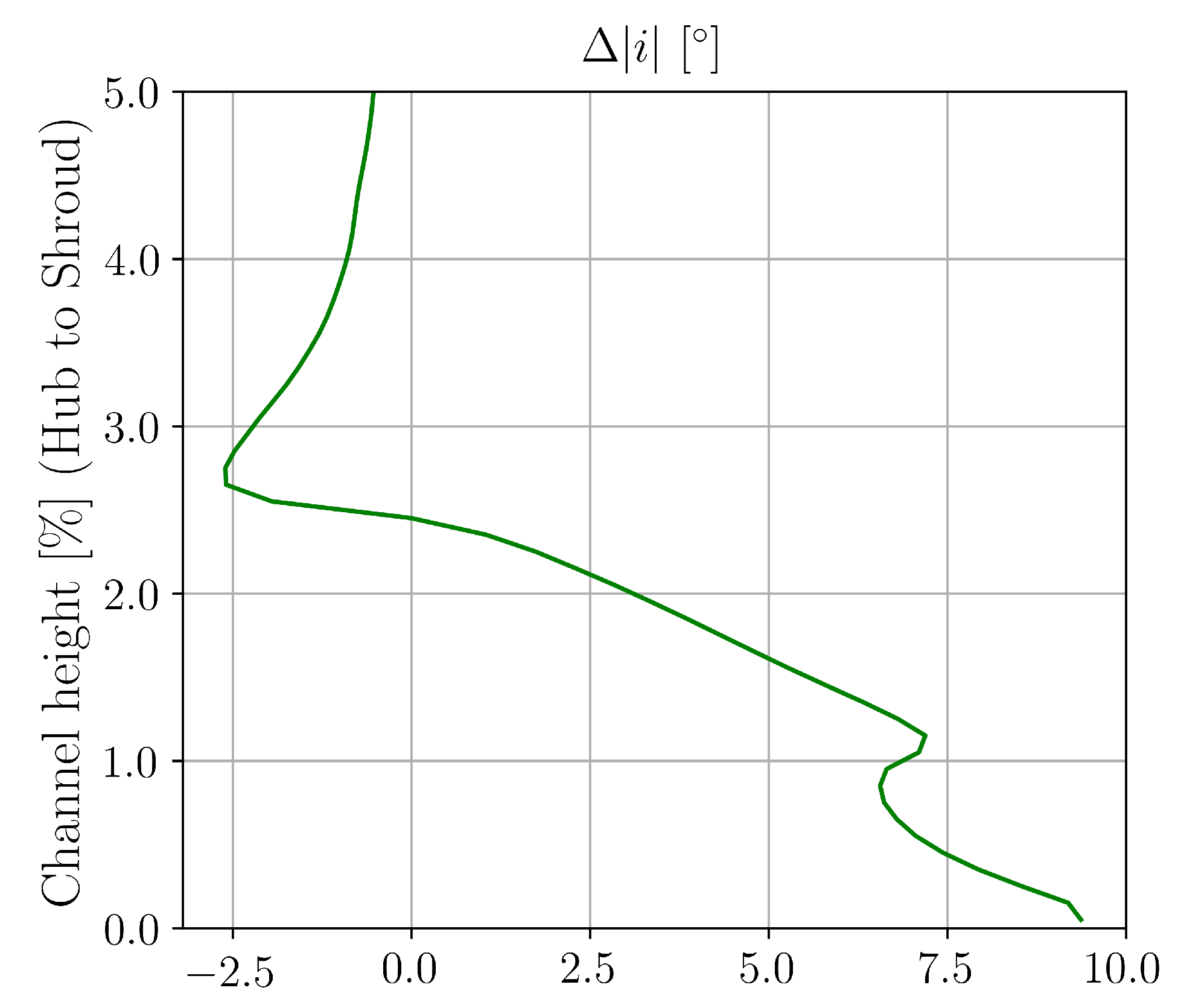
© 2020 by the authors. Licensee MDPI, Basel, Switzerland. This article is an open access article distributed under the terms and conditions of the Creative Commons Attribution (CC BY) license (http://creativecommons.org/licenses/by/4.0/).
Share and Cite
Hermann, D.; Wirsum, M.; Robinson, D.; Jenny, P. Operating Range Extension of an Open Impeller Centrifugal Compressor Stage Utilising 3D Diffuser End Wall Contouring. Int. J. Turbomach. Propuls. Power 2020, 5, 4. https://doi.org/10.3390/ijtpp5010004
Hermann D, Wirsum M, Robinson D, Jenny P. Operating Range Extension of an Open Impeller Centrifugal Compressor Stage Utilising 3D Diffuser End Wall Contouring. International Journal of Turbomachinery, Propulsion and Power. 2020; 5(1):4. https://doi.org/10.3390/ijtpp5010004
Chicago/Turabian StyleHermann, Daniel, Manfred Wirsum, Douglas Robinson, and Philipp Jenny. 2020. "Operating Range Extension of an Open Impeller Centrifugal Compressor Stage Utilising 3D Diffuser End Wall Contouring" International Journal of Turbomachinery, Propulsion and Power 5, no. 1: 4. https://doi.org/10.3390/ijtpp5010004
APA StyleHermann, D., Wirsum, M., Robinson, D., & Jenny, P. (2020). Operating Range Extension of an Open Impeller Centrifugal Compressor Stage Utilising 3D Diffuser End Wall Contouring. International Journal of Turbomachinery, Propulsion and Power, 5(1), 4. https://doi.org/10.3390/ijtpp5010004



